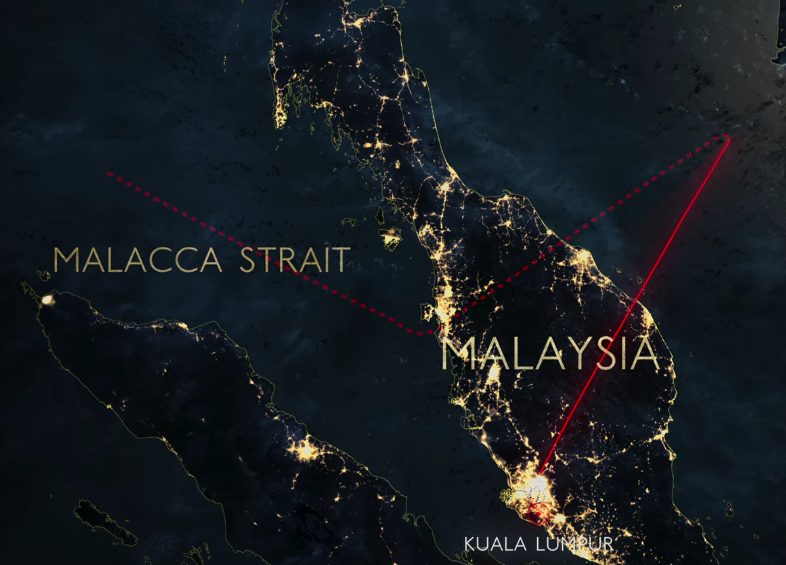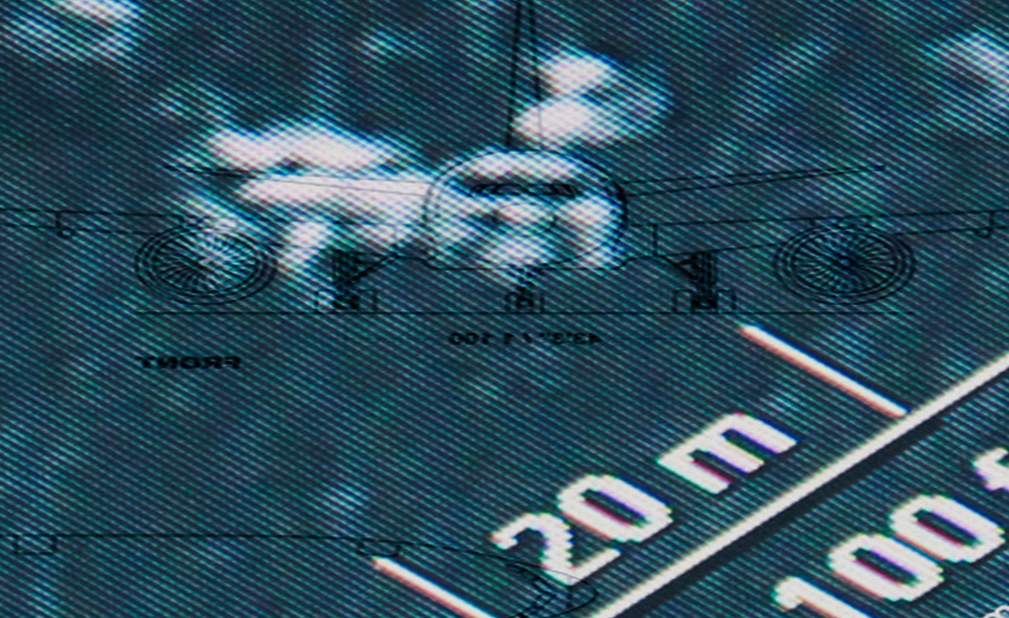
“Planes go up, planes go down… What planes don’t do is just vanish off the face of the earth,” said aviation journalist Jeff Wise in Netflix’s newest docuseries, MH370: The Flight That Disappeared.

Nine years ago, on March 8th, 2014, Malaysia Airlines Flight 370 (MH370) took off at 12:41 AM from Kuala Lumpur Airport in Malaysia. The plane was expected to arrive in Beijing, China at 6:30 AM, but it never did.
MH370 was meant to be a routine flight. Carrying 227 passengers and 12 crew members, the majority were Chinese citizens; others were artists and their families returning from an art exhibition in Kuala Lumpur; and there were, of course, Malaysians and other international passengers. But air traffic controllers in towers had not yet witnessed that MH370’s plane signal would suddenly disappear from their screens and never resurface, nor did loved ones on the ground realize that these passengers would never come home.
Hours after Malaysian officials reported the flight’s disappearance, it became the center of the public eye. As the press flashed their cameras at family members and friends, who distressingly cried for the passengers aboard and for an answer, MH370 quickly became a high-profile investigation—and, to conspiracy theorists and the speculative public, a mystery.
Since then, discoveries would come in the form of metal debris washing ashore on lands by the Indian Ocean that were claimed to have belonged to MH370. Relief came from officials’ reassuring messages to passengers’ loved ones that the investigation was progressing, and also the realization for some that it was time to move on.
But these were in spite of searches that were called off after months of no notable findings, the Malaysian government’s reluctance in approving a new search and instead issuing questionable reports, and arising conspiracies like a “third party” having unlawful interference in the investigation or a pilot plotting the flight to be a deliberate mass murder-suicide. They all only further tangled the mystery of MH370’s disappearance.
The overall investigation had not progressed to the extent that officials had told the public, and discoveries and words of encouragement were not answers. The public still wants actual answers. What happened to Flight 370?

MH370: The Flight That Disappeared recently premiered on the ninth anniversary of the disappearance. An investigative yet emotional docuseries, it provides an intricate timeline of the disappearance and the conspiracies that followed and a confirmation that passengers’ loved ones still grieve from their loss.
But above all—despite not having the answer to that question—it suggests the long-running belief that investigation officials and the Malaysian government know precisely what happened to MH370 and will not reveal it to the public.
The first episode, fittingly named “The Pilot,” focuses on a theory—based only on satellite data spotting potential Boeing 777 fragments, mathematical calculations, and no physical evidence—that the plane suddenly turned the opposite direction of its flight path leading to Beijing, headed towards the Southern Pacific Ocean, and vanished there
When then Malaysian prime minister Najib Razak revealed this “confirmed discovery” to the public, he implied that the 239 passengers were dead—“literally on the basis of mathematics alone,” said Wise. “This calculation of where the plane was positioned wasn’t even verified, and this is what they go to tell the public… it’s almost as if they’re frantically trying to cover something up.”

Wise then proposes “Theory One: The Pilot,” branching off into a more detailed suggestion that MH370 copilot Zaharie Ahmad Shah staged a mass-murder suicide—as mentioned earlier—by depressurizing the plane cabin until all passengers were unconscious, making the turn, waiting six hours for the plane to run out of fuel, then nose-diving it into the ocean. I’m sitting there watching while thinking how crazy this all is.
This theory is only one of several that the docuseries discusses throughout its three-part quest for answers to MH370’s disappearance. Each episode ends with a suspenseful cliffhanger that transitions onto the next, introducing a crazier theory than the one before it. For example, episode two documents the discovery that only four months after the disappearance, Malaysia Airlines Flight 17 (MH17) was shot down by a Russian missile along the border of Russia and Ukraine. Conspiracy theorists and journalists are left thinking this could not just be an unsolved mass murder, but an act of terrorism. Some think MH370’s fate was similar to that of MH17.
As mentioned, over the next few years, avid MH370 enthusiasts discovered scattered physical debris, which had all washed ashore on islands in the Southern Indian Ocean. Still, others believe in hijackers with political motivations, alien abductions, meteors, or black holes. Everyone claims to have the truth.
But not only had the docuseries expressed several baseless theories made about the disappearance that investigators were forced to assume were possible truths, but also the many stories from grieving family and friends who mourn for their loved ones to this day. One I could not forget was that even weeks after the disappearance, one man—a husband and father to MH370 passengers—continued texting his loved ones aboard every day asking how they were and then sharing about his own day, what he did, and how excited he was for them to come home. He never got a response.
To this man and everyone else in the world, it all felt too unreal to realize that his wife, two kids, and the 236 other passengers would not come home for the next several years. They still have hope, but someone has yet to give them an answer. said Blaine Gibson, who was an avid hunter for MH370 debris. “We need to show them that a plane can’t just disappear. We owe them the proof, the explanation, the closure.”
“We need to bring the answers to the families. We need to show them that a plane can’t just disappear. We owe them the proof, the explanation, the closure.”
Blaine Gibson
From the moment I started watching MH370: The Flight that Disappeared, I was hooked. It became everything at once—suspenseful, emotionally provocative, lighthearted, heartbreaking. I realize that even nine years after the disappearance of MH370, loved ones on land still suffer the same grief they felt from this loss and the lack of justice delivered. It is now up to the power of not secretive officials, but public advocacy to uncover what really happened to this plane all those years ago. I highly recommend giving this a watch if you would like to know more about what may arguably be the world’s greatest aviation mystery.



